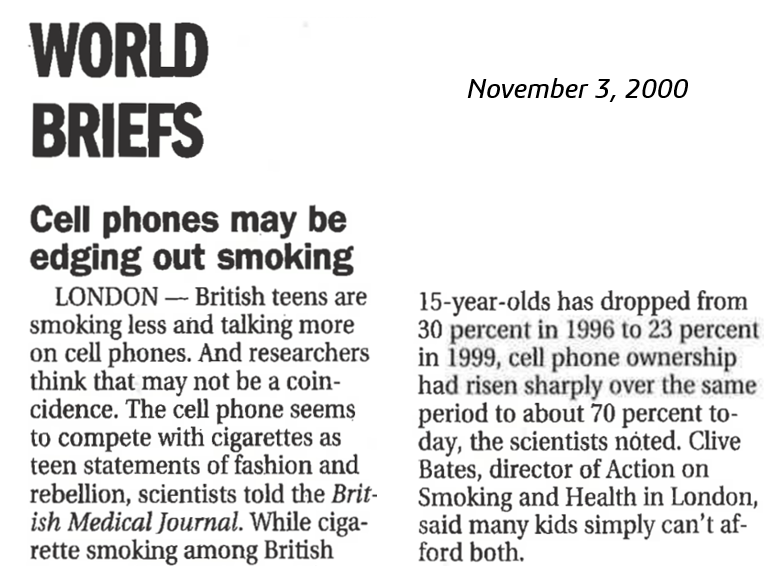Throughout the 20th century, the harmful effects of cigarette smoking were downplayed by tobacco companies and ignored by consumers. Nor did the public have a negative view of the tobacco industry, which was a major sponsor of sports, the arts, and many of the most popular radio and TV shows. As recently as the late-1990s, the tobacco industry even denied that cigarette smoking caused lung cancer, heart disease, emphysema, and addiction. Yet the number of Americans who die each year from smoking has risen to nearly 500,000.
The modern anti-smoking movement arose in the 1960s following the publication of research studies that implicated cigarettes as the main cause of lung cancer. In contrast, despite rising digital media addiction and studies implicating this dependency in a growing number of health problems, there is no significant effort to reduce digital media use. Indeed, although media companies encourage constant use of technology, they are largely seen as beneficent. Common Sense Media, which claims to be an independent watchdog of media directed at children, is funded almost entirely by the major media corporations (eg, Google, Microsoft, Facebook Apple, Netflix) and online retailers (eg, Amazon).
In 2000 a British study attributed the decline in smoking among teenagers to their buying cellphones instead of cigarettes. Have we merely replaced one serious addiction with another?
Digital media addiction is an emerging issue that is rapidly taking over peoples’ lives. Young adults, in particular, spend nearly 10 hours a day in front of a device. This constant attachment to technology is causing mental, emotional, and physical issues as well as decreases in attention, civility, and academic success.
View our findings and other news in the menu above.

Webpage built as part of a research project between the CSTS and the RRSP.
Contact
Alan Blum, M.D., Director
205-348-2886
ablum@ua.edu
© Copyright - The Center for the Study of Tobacco and Society

